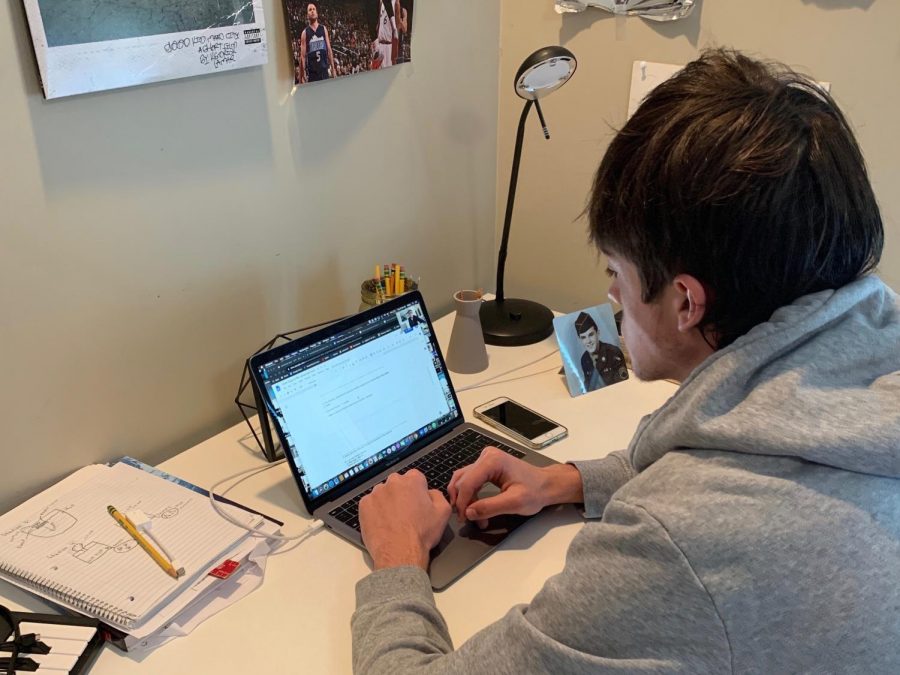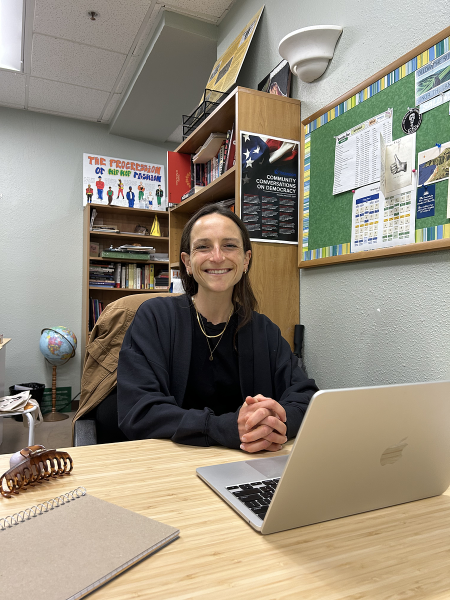90 minute block: Less focus, more screen time?
October 5, 2020
Branson established a new block schedule to safely navigate in-person and online school.
Compared to the 55- or 70-minute classes on a six-day rotation last year, the new schedule has three 90-minute classes every day except for Wednesday.
Due to longer classes and the online environment, students find themselves struggling to focus during class and have the motivation to work. Compared to in-person school where a student is only surrounded by their peers and teacher, distance learning presents many distractions such as siblings, parents, electronics, and more.
Eva Baldauf, a sophomore and Blazer cartoonist, said, “I have a hard time paying attention and I think other students do too. We should be responsible if we can manage it and stay focused because some students can have a hard time focusing during class.”
Focusing isn’t the only problem for students; as screen time increases, so do students’ exhaustion. While Wednesday is dedicated to studying and homework, students have advisory, clubs, flex and possibly human development for the freshmen and sophomores.
These opportunities to be on the computer deprive students of the chances to complete offline studying and homework. Students, like Caitlin Capitolo, wish to spend less of the day on zoom and have more time for asynchronous work.
“The 90-minute classes are really long and I get really tired from looking at the screen. I wish there was less time on Zoom and more asynchronous time. Also, homework adds my screen time,” Capitolo, a freshman, said.
Although teachers are encouraged to provide students short breaks throughout the class — for the bathroom, water or a break from the screen, students and even teachers find the classes exhausting.
Faculty, like Peter Zdrojewski, who is also the sophomore dean and marine biology teacher, work to create more engaging and interactive lessons for their students despite the difficulties.
“It’s draining on a teacher, it’s draining on me, it’s draining on the kids, and I think all that together makes it more exhausting,” he said. “We knew they were going to be 90-minute classes before school started so I think it forced me, as a teacher, to be creative, to — number one — think outside the box in regards to how I’m delivering my lessons for the day and try to have as much variation to that as possible.”
The longer classes lead to more time on the computer. While lunch is as long as half a class and breaks in between are 10 minutes, the 90-minute classes assume most of the time on Zoom. If a student were to spend the entire three classes on the computer, this student would spend up to four and a half hours on a screen, disregarding advisory, assembly, clubs, flex and other opportunities to be on a computer.
A large increase in screen time can, scientifically, have effects on the brain, sleep, and the human body. According to CareWell Urgent Care, “Studies link heavy computer and smartphone use to increased sleeping issues. The blue light from digital devices suppresses the sleep-promoting hormone melatonin, keeping us from having restful sleep.”






